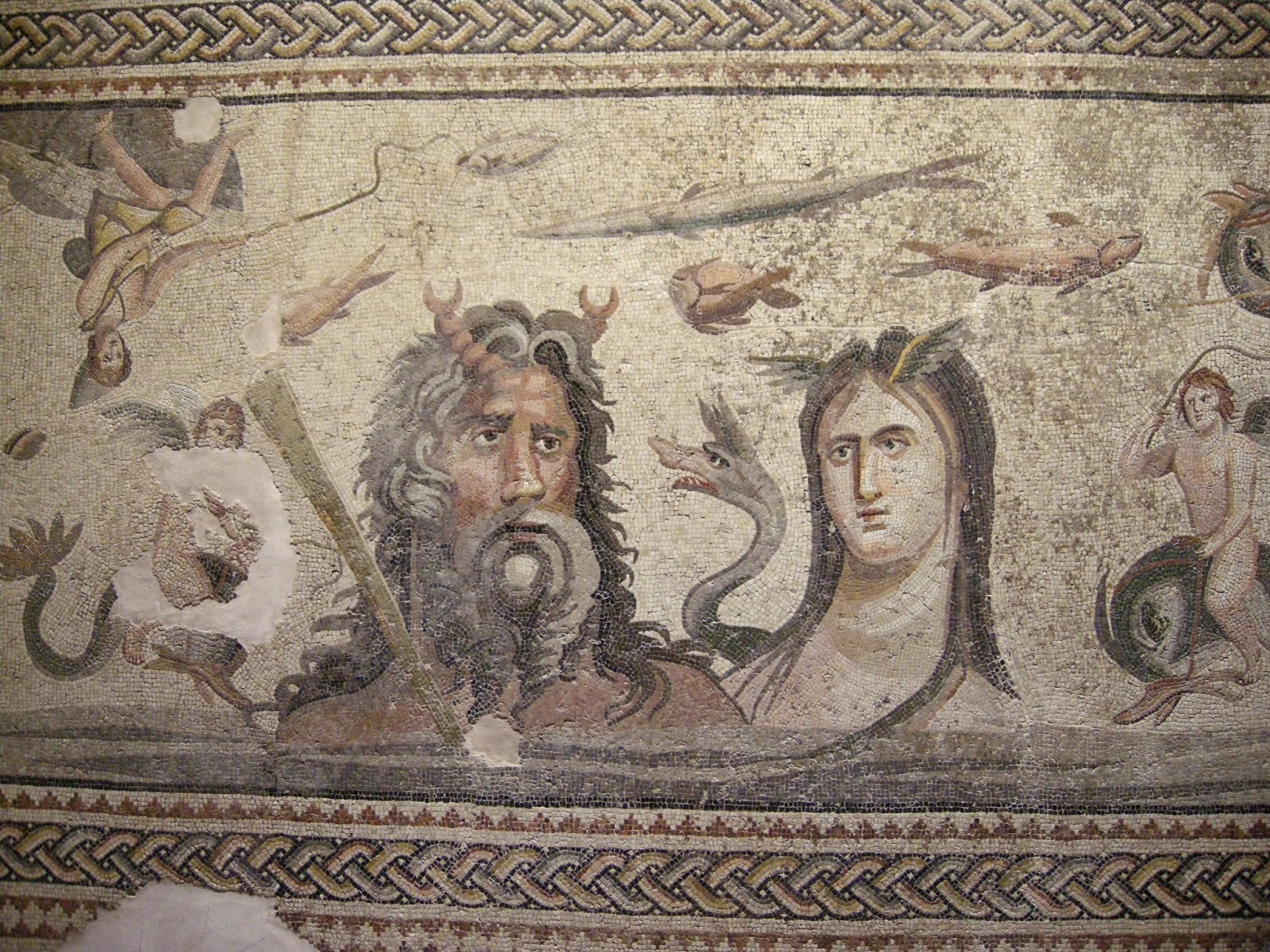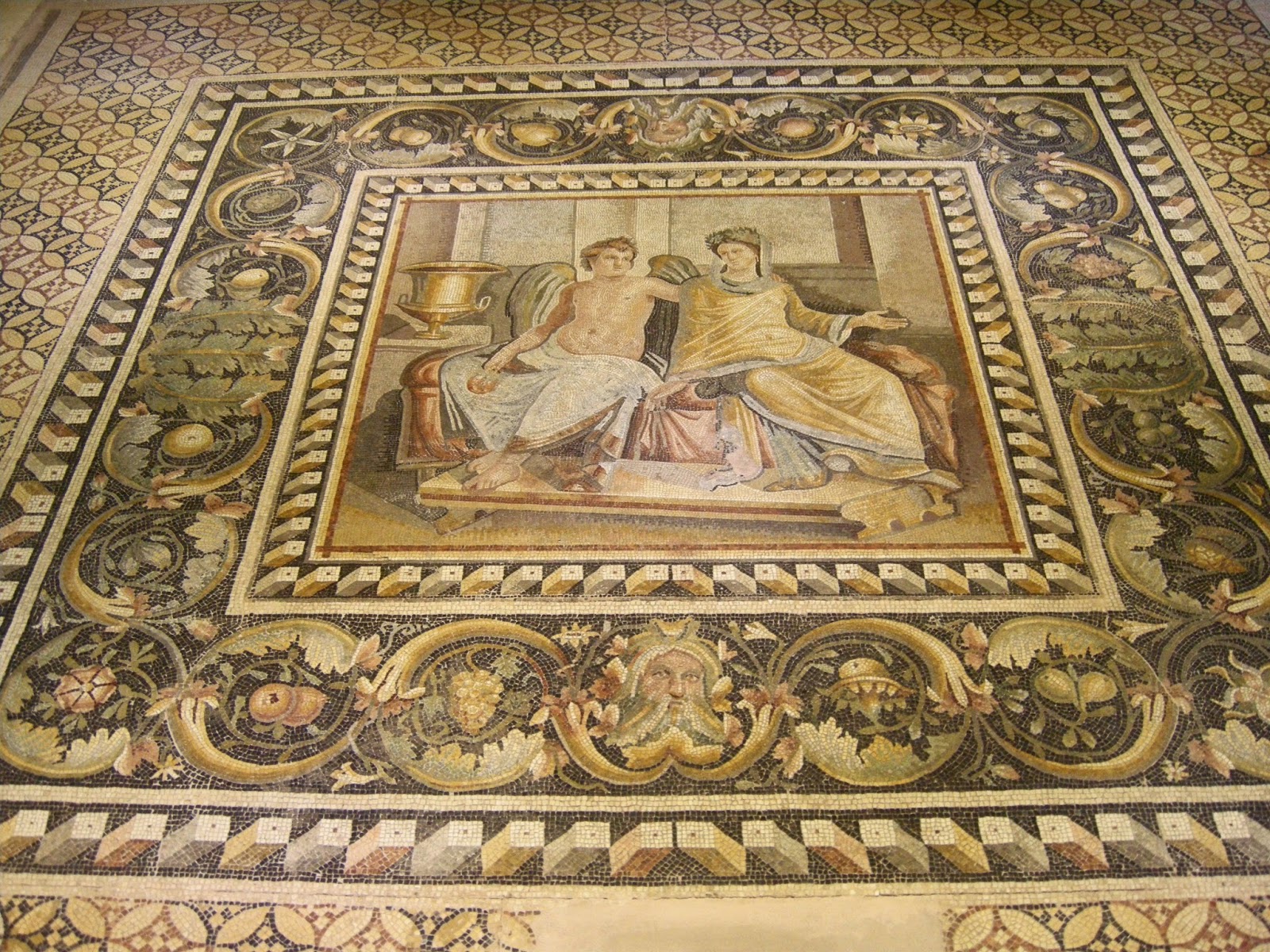Photos by Jack A. Waldron
The Zeugma museum is most famous for housing the Gypsy mosaic (pictured above), among other mosaic treasures. But before we get to the museum, first an exploration of the ancient site of Zeugma (pictured below)(37°03'27.0"N 37°52'05.4"E).
The upper city palace remains in situ, where it is now preserved by a massive roofed glass enclosure (see above and below).
A father and son who were shocked to see me cycling to the ancient city stopped me along the route to chat, both spoke near perfect English and accompanied me through the upper city (pictured below).
When I cycled through their hometown of Osmaniye the following day, they showed me some Turkish hospitality by taking me out for a fantastic kebab dinner!
The word zeugma is used in Thucydides histories (5C BC) meaning,'bridge of boats'. In 64 BC, Zeugma was given to Antiochus I by the Romans, and who had assumed the role as a member of the 'toga praetexta', a robe bordered with a purple stripe worn by the higher magistrates of the Roman empire.
This appears to be the beginning of a hegemonic state between Rome and their rival enemy Parthia, whom Antiochus kept close relations.
Pictured below, the upper part of the city can be seen under its massive glass enclosure, and beyond the glass you can see the Euphrates, now cover the lower city.
Due to the damming of the Euphrates, the lower city is lost under its currents, but all the mosaics were hurriedly excavated and moved to the Zeugma Archeological Museum.
In the photo below, you can see the lower city with its magnificent mosaics shining within the buildings they once adorned.
Those magnificent mosaics and some of the major buildings that surrounded them are now preserved in the Zeugma Archeological Museum in the city of Gaziantep, or, Antep (see below).
An important crossing point on a curve in the Euphrates, Zeugma, meaning 'the span', was thus named according to Pausanius (2C AD) by the god Dionysus as, 'the city in the place where the Euphrates was spanned'.
Above, a mosaic of the river god Oceanos and his wife Tethys who are encircled by sea creatures.
In the mosaic above, Metiochus and Parthenope set their gaze upon each other. Below, the myth of their relationship plays out, and the history of the mosaic is told.
Below, the largest mosaic in the museum depicts the tale of Pasiphae and Daedalus and a labyrinth built by Daedalus to confine the fabled Minotaur.
Pictured below, a diagram explaining the layers and constructions of mosaics was very interesting.
Pictured below, a recreation of a partial mosaic showing the various layers.
Below, a bronze statue of Mars found at the site and which once watched over the ancient city of Zeugma, now stands atop a column guarding the Zeugma museum in Antep.
*All photos and content property of Jack A. Waldron (photos may not be used without written permission)
**Please support my work and future postings through PATREON:
Or, make a Donation through PayPal:































No comments:
Post a Comment
Note: Only a member of this blog may post a comment.